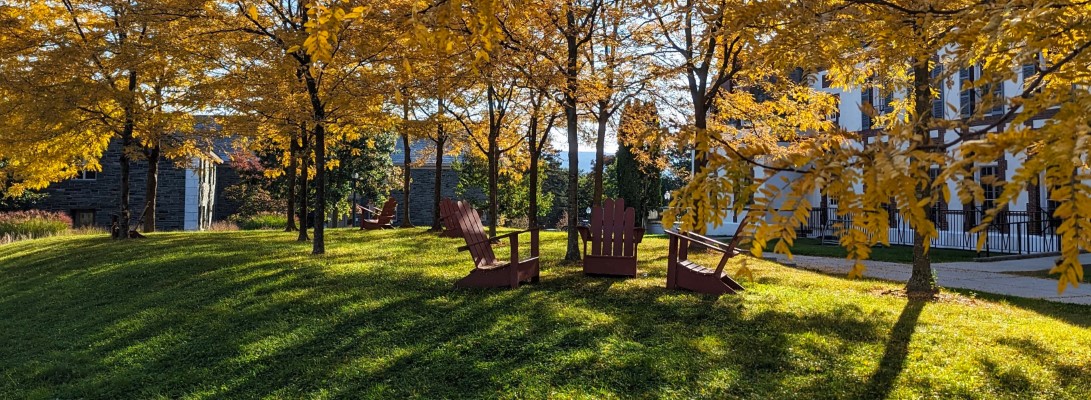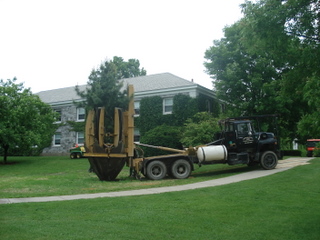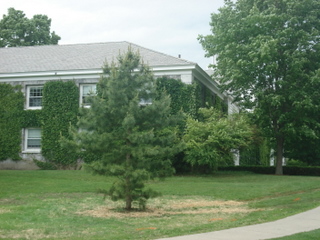Sorry about the lack of posts lately. It’s ironic, a landscaper having a blog. The time of the year we have the most to write about we have the least amount of time in which to write. This is a little update to the Black Willow saga, and the tree that is there now.Middlebury College is replacing a main water line (main water main?) right through the main quad of campus, below Mead Chapel. I had the pleasure of working with Tom McGinn, the Project Manager in Facilities Services doing this project. Right from the very beginning, great care was taken in placement and construction of the new line, in order to preserve the trees along the way. Unfortunately, there was just one tree we couldn’t seem to work around.
A Limber Pine, Pinus flexis, lies right on top of the ideal spot for the new line. This is a pretty pine, native to the Rocky Mountains. Very healthy, it is thriving in what is quite heavy clay soil down near Old Chapel Road. At only 12′ tall or so, it proved to be an ideal candidate for transplanting, and, with the help of an 84″ tree spade on an impressively large truck, was dug today.
Moving a tree isn’t terribly easy, but not too difficult. After all, hydraulics is doing most of the work. The worst task in the process is the tying of the branches so that the tree spade can fit around it. But, it is a Limber Pine, and, as we learned, aptly named. The other hard part of moving a tree is finding the location to move it to. 200 acres of campus, and no place to plant a tree. We avoid planting trees near water lines, phone lines, power lines, steam lines, chiller lines, future sidewalks, lines of sight, popular open areas, volleyball net locations, well, you get the idea.
And then I got an email from someone asking what was replacing the Black Willow. And the limber pine came to mind immediately. So, a mobile tree, and instant gratification. Look for this pine to get 30-50′ in height, by maybe 15-35′ in spread. A nice, loose but still somewhat upright formal shape will continue forming. It holds its needles in clusters of 5, like our Eastern White Pine, but holds onto those needles for 5-6 years, versus 2-3 in a White pine, so it should stay nice and full. Go walk over and introduce yourself when you are over there.


